I am trying to convert ggplot code which is repetitive into function; I have done almost but only concern is I need to pass the application as a variable.
Here is the plot code where I used column called Application inside the summarise and mutate. The challenge is same column has been used for y axis
ggplot_common_function <- function(data,x,y,z) {
Removestring(ggplotly(
data %>%
group_by(m_year,status) %>%
summarise(Applications = sum(Applications)) %>%
mutate(total_sum = sum(Applications)) %>%
ggplot(mapping = aes({{x}},{{y}},text = paste(total_sum))) +
geom_col(aes(fill = {{z}})) +
theme_classic() +
theme(axis.line.y = element_blank(),
axis.ticks = element_blank(),
legend.position = "bottom") +
labs(x = "", y = "Agreements Values (In Lakhs)", fill = "") +
theme(axis.title.y = element_text(size = 8)) +
scale_fill_manual(values = c("#1F7A3F", "#70B821")) +
scale_y_continuous(labels = function(x) format(x, scientific = FALSE),
expand = expansion(mult = c(0,.3)),
breaks = integer_breaks()),
tooltip = c("text")) %>%
layout(legend = list(orientation = "h", x = 0.1, y = -0.2,
font = list( family = 'Arial', size = 10, color = 'black')),
xaxis = x_labels, yaxis = y_labels) %>%
config(displaylogo = FALSE, modeBarButtonsToRemove = list(
'sendDataToCloud', 'autoScale2d', 'resetScale2d',
'toggleSpikelines', 'hoverClosestCartesian', 'hoverCompareCartesian',
'zoom2d', 'pan2d', 'select2d',
'lasso2d', 'zoomIn2d', 'zoomOut2d'))
)
}
ggplot_common_function(data,m_year,Applications,status)
To run the above code there is some pre function
integer_breaks <- function(n = 5, ...) {
fxn <- function(x) {
breaks <- floor(pretty(x, n, ...))
names(breaks) <- attr(breaks, "labels")
breaks
}
return(fxn)
}
Removestring = function(d){
for (i in 1:length(d$x$data)){
if (!is.null(d$x$data[[i]]$name)){
d$x$data[[i]]$name = gsub("\\(","",str_split(d$x$data[[i]]$name,",")[[1]][1])
}
}
return(d)
}
Plan <- "#288D55"
multicolor = c("#135391","#0098DB","#828388","#231F20","#C41330","#698714","#162FBF","#F36717","#BD00FF")
x_labels = list(tickangle = -45,tickfont = list(family = "Arial",size = 10,color = "black",face="bold"))
y_labels = list(tickfont = list(family = "Arial",size = 10,color = "black",face="bold"))
Any suggestions would be appreciated
